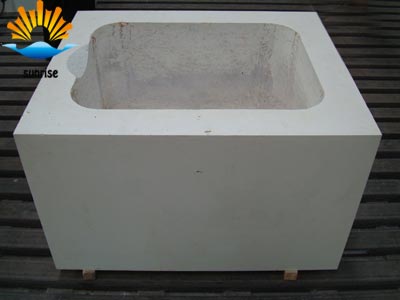 BackNews
BackNews
Temperature control of fused brick casting
2017-11-15 11:01:32The casting process of fused bricks, especially for multi-component fused zirconia corundum bricks, is complicated because each component has its own melting point and crystallization temperature, which differ from one another by a hundred degrees . Refractory materials with a melting point up to 2600K made by electric arc furnaces have so far not been possible.
It is well known that the brazing material must be heated before it is discharged. For example, for steel. The temperature before pouring is 100 degrees above the melting point in order to completely fill the mold to get the exact geometry of the castings. For fused zirconium corundum, the temperature is 200 degrees higher. When melting and pouring multicomponent ingredients, it is usually by eutectic point or invariant point. At this time, each component can crystallize at the same time.
If the temperature of the multi-component fused brick melt does not rise to the temperature of the most refractory component, the melt may be discharged by overheating the cryogenic component. However, in this case, the fused brick will contain unmelted components. Analysis of the selection of ingredients, the composition of the general refractories in the melting point of each component is not very different. However, this difference is about 1000 degrees in the ternary system of fused corundum brick and chrome spinel, which makes it difficult to formulate the electrofusion bricks casting process, but does not exist in the case of steel casting. The difficulty is that for each multicomponent system, the components and percentages are chosen to determine the eutectic or invariant points, taking into account the melting behavior of each component and the effect of the mixture on the crystallization process of the refractory material Characteristics, which requires special research.



